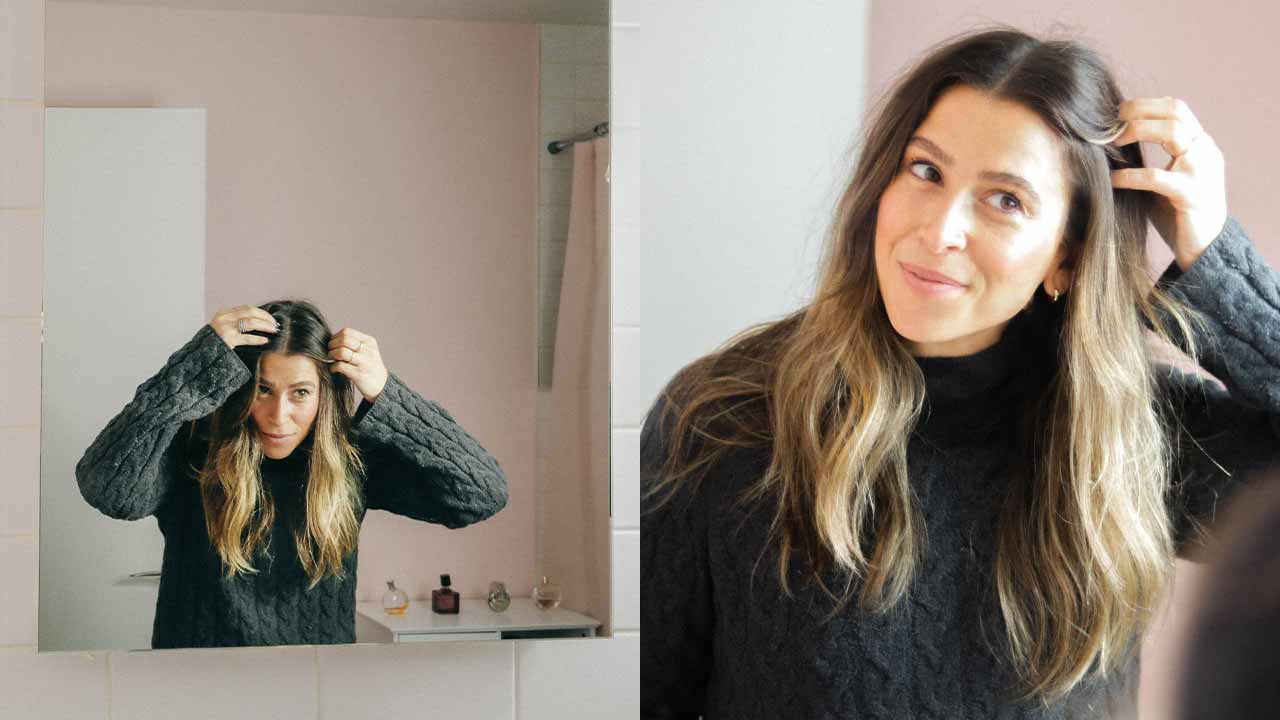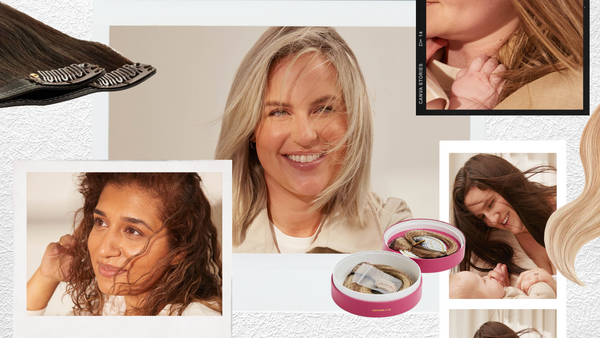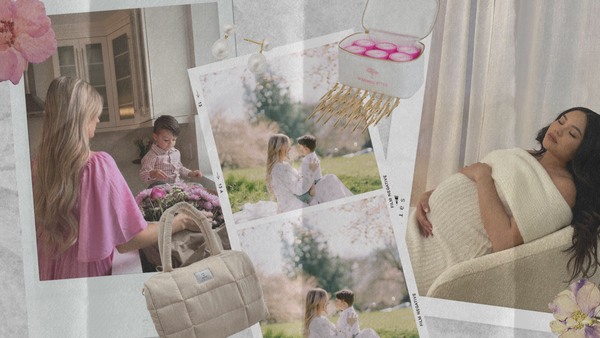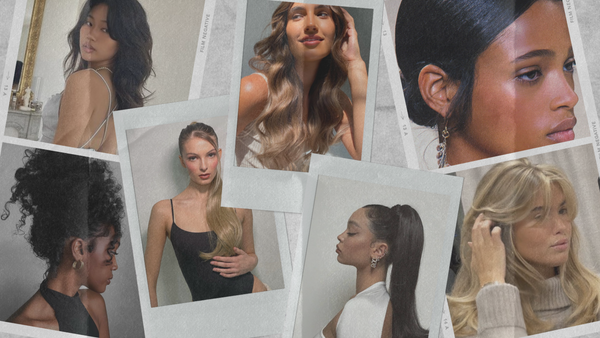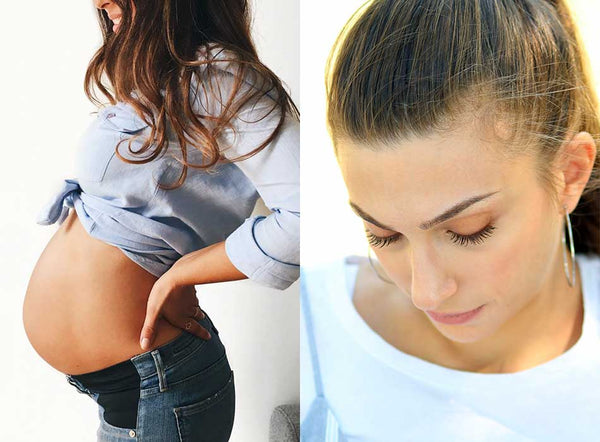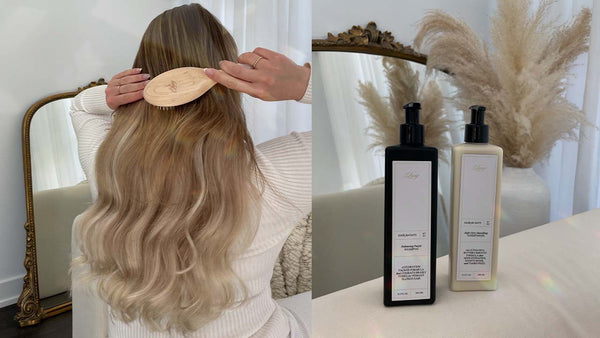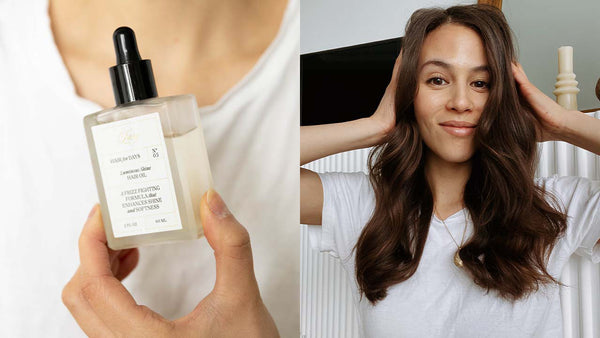There are some rites of passage that are unavoidable—the first time someone calls you "Ma'am" instead of "Miss," the realization that sitting on the floor is no longer a comfortable option, and that moment when you discover that your gray hairs are starting to outnumber their non-gray brethren. You have two choices. You can either launch into full-blown panic, ripping out the defiant follicles, desperately clinging to the vestiges of youth. Or (and this is the far better option) you can embrace these silver symbols of wisdom and experience, and show the world that you are comfortable in your own skin—and hair.
If you have opted for anxiety and alarm, this guide to gray hair will, hopefully, quiet your qualms. And, if you have decided to calmly accept your grays, it will provide you with a number of ways to care for and celebrate your glorious whitening mane.

What causes gray hair?
Most people start to see the appearance of some grays during their mid-thirties and early forties, but some will whiten prematurely in their twenties. If you'd like to predict when this transition will begin for you, your best bet is to look at parents. The age at which you will go gray, after all, is determined by genetics.
Why does your hair turn gray? Your natural hair color, from the deepest mahogany to the most platinum blonde, is created by pigment cells in your hair follicles. These produce melanin that makes your hair its proper designated hue. When these pigment cells cease to function, gray hairs appear instead. As you mature, this failure to produce melanin spreads from follicle to follicle, eventually giving you a full head of silvery strands.

How do you reverse gray hair?
When you spot your first grays, you may panic and Google the question, "How do you reverse gray hair?" Again, graying is controlled by your genes, but there are a few things you can do to improve the overall health of your hair. Since hair is made of protein, a diet high in proteins will greatly strengthen your follicles. Eggs, fish, and nuts are great choices. To prevent hair loss, it is important to include a healthy dose of iron in your diet as well. In a list of five foods for longer and healthier hair, it is recommended that you consume pumpkin and sunflower seeds in order to boost your iron levels and improve your hair's health.
It is also suggested that massaging the scalp can help the blood carry much needed nutrients to your hair follicles -- better nourishing your hair back to health.

The Biggest Don't
Whatever you do -- do not reach for the tweezers! First of all, plucking that gray hair will not change a thing. Another one will simply grow back in its place. Secondly, if you have a number of gray hairs, plucking them will only thin out your luxurious locks. And, most importantly, yanking out those grays can lead to irreparable damage. Aveda Canada's Creative Director, Kristjan Hayden, tells Chatelaine, "Plucking out grey hairs can damage the follicle, and sometimes your hair just won't grow back." Do that enough times and you will be extremely sorry. Unless you are striving to look like Jean-Luc Picard.
Coloring gray hair
When your first gray hairs begin to randomly appear, there is no need to begin dyeing your full head of hair. Opting for highlights will do wonders for masking a few rebellious whites. Covering the offending follicles with a hair mascara may also do the trick. Or, you can avoid putting unwanted chemicals in your hair completely using hair extensions to add highlights.
Celebrity colorist, Rita Hazan, tells Allure that the right time to start dyeing your hair is when it is about 30 percent gray. At that point, you will have a few decisions to make. The first will be selecting the best color for you. If you opt for a dark hue, it will require more maintenance as there will be more contrast between your deep shade and your silver follicles. This is why so many graying individuals decide to go blonde. Ash blonde is a particularly viable choice as it combats the yellowish hue that often beleaguers gray hair.

The next big decision will be choosing between permanent and semi-permanent dyes. A permanent color does an optimum job of covering grays, but they are much more obvious when they start to grow out -- often leaving a highly noticeable line. Semi-permanent products gradually wash out instead of leaving an obvious demarcation, but they do not cover up your white follicles as efficiently. A professional colorist may even suggest combining low-lighting and high-lighting to conceal those pesky grays.
Another option is henna hair dye. Made with natural ingredients, it contains multiple tones that will help conceal your gray hair. Plus, as one of the best hair secrets from around the world, using henna removes chemicals from the dye process, which is always a win for the health of your hair. It provides a highly permanent hue, but bear in mind -- using henna can be a tricky process.
How to grow out gray hair
Transitioning to gray need not involve highlights or dyes. The right haircut can enable you to go gray gradually in style. A great way to navigate that awkward stage in between salt and pepper and full-blown gray is to go for a short cut like a pixie. Not only can a well-executed snip look both playful and sophisticated, but it can also add body to fine gray strands.
Long layers work too, particularly if they are somewhat tousled, helping to conceal silver roots. If you'd like to add some longer layers, balayage hair extensions may prove the perfect solution. And, if you wish to eschew the scissors completely, hide your whitening hairline by opting for a messy part.

How to get yellow out of gray hair
In recent years, gray hair has become a sought-after hue by the young and not-so-young alike. As one of the top hair color trends, women of all ages have actually flocked to hair salons seeking to have their entire heads of hair dyed gray. If you decide to embrace your new shade, there are a few tips that you will want to follow.
Gray hair, unfortunately, is susceptible to adopting a yellowish tone. Yellow hair isn't a great look on anyone. Even Lisa Simpson has a hard time pulling it off. In order to keep your whites bright, you will want to include blue or purple-hued shampoo and conditioner in your hair care regime. In a guide to using purple shampoo for blonde hair, it is said that purple shampoo enhances cool and silvery tones --which is exactly what you want. If your hair is slightly brassy, you may be able to get away with just the shampoo as the conditioners contain more pigment. If you suffer from very yellowing follicles, the conditioner is the way to go. Most experts recommend using these products once a week, but you may need to use them more often if you receive a lot of sun exposure.
Spritzing your hair with a product designed to protect it from ultraviolet rays is also a good idea, especially during the sun-soaked summer months.

Coming to terms with gray hair
Turning gray is a perfectly natural process, so why fight it? Thanks to a myriad of coloring products, trendy hairstyles, hair extensions, and gray hair shampoos, your silvering mane can become your very best feature. Instead of cringing at the appearance of every new white hair, embrace this change. You are, after all, a woman who has "been there and done that" with the wealth of knowledge and confidence that comes with it. If you need inspiration, Jamie Lee Curtis, Lady Gaga, Pink, and the very young Zosia Mamet have all sported a silvery hue. So remember that you, too, are a white fox, and you can wear those snowy white locks with pride.
Written by: Kimberley Laws
